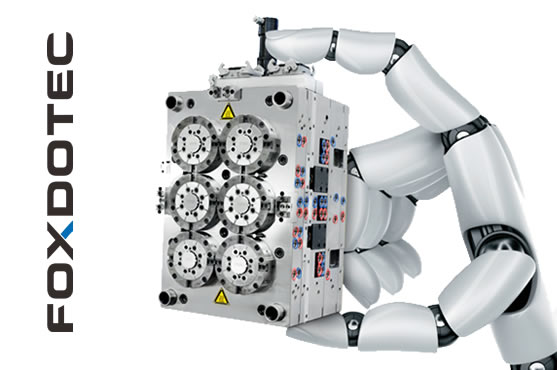Mold Testing Services
Ensure flawless performance with our Mold Testing services! Our experienced technicians meticulously assess every aspect of your molds, guaranteeing optimal functionality and reliability. Say goodbye to uncertainties and hello to peace of mind. Trust in our expertise for thorough and reliable Mold Testing. Your success starts with precision—partner with us today
Mold Testing
What is Mold Testing?
Mold testing is a critical step in the manufacturing process that involves evaluating the performance, functionality, and quality of a mold before it is used for production. This testing helps ensure that the mold will produce parts that meet the specifications and requirements of the final product.
The mold testing process typically includes the following steps:
- Setup: Prepare the mold for testing by installing it in the molding machine and configuring any necessary parameters such as temperature, pressure, and cycle time.
- Sample Production: Run a series of production cycles using the mold to produce sample parts. These parts are inspected and evaluated to assess their quality, dimensional accuracy, surface finish, and other critical characteristics.
- Performance Evaluation: Evaluate the performance of the mold during the testing process, including factors such as fill time, cycle time, part ejection, and mold cooling. Any issues or abnormalities are noted and addressed as needed.
- Quality Assurance: Conduct thorough quality assurance checks to verify that the sample parts meet the specified requirements and standards. This may involve dimensional measurement, visual inspection, and functional testing.
- Adjustments and Optimization: Make any necessary adjustments or optimizations to the mold design, process parameters, or production setup based on the testing results. This may include modifying the mold geometry, adjusting injection parameters, or optimizing cooling channels.
- Validation: Once the mold has been tested and optimized, validate its performance through additional production runs and testing. This ensures that the mold is capable of consistently producing high-quality parts over the long term.
Overall, mold testing is essential for ensuring the reliability, functionality, and performance of molds used in manufacturing processes. By thoroughly testing molds before production, manufacturers can identify and address any issues early on, minimizing the risk of defects and ensuring the quality of the final product.
Precision Injection Mold


How to do a good Mold Testing?
Successful Mold Testing Process
To ensure a successful mold testing process, follow these steps:
- Preparation: Prepare the mold and molding machine for testing by cleaning, inspecting, and ensuring proper setup. Verify that all components are in place and functioning correctly.
- Define Objectives: Clearly define the objectives and criteria for the mold testing, including the specific parameters to be evaluated and the acceptable performance standards.
- Sample Production: Run a series of production cycles using the mold to produce sample parts. Follow standardized procedures and record relevant data such as cycle times, temperatures, and pressures.
- Quality Inspection: Inspect the sample parts thoroughly to assess their quality, dimensional accuracy, surface finish, and other critical characteristics. Use appropriate inspection tools and techniques.
- Performance Evaluation: Evaluate the performance of the mold during the testing process, including factors such as fill time, cycle time, part ejection, and mold cooling. Identify any issues or abnormalities and note them for further analysis.
- Adjustments and Optimization: Make any necessary adjustments or optimizations to the mold design, process parameters, or production setup based on the testing results. This may include modifying the mold geometry, adjusting injection parameters, or optimizing cooling channels.
- Validation: Once adjustments have been made, validate the mold's performance through additional production runs and testing. Verify that the mold is capable of consistently producing high-quality parts that meet the specified requirements.
- Documentation: Document all testing procedures, results, and findings in detail. Maintain comprehensive records for future reference and analysis.
By following these steps and conducting thorough mold testing, you can identify and address any issues early on, ensuring the reliability, functionality, and performance of the mold in production.

CNC Machining
CNC machining is a computer-controlled manufacturing process that utilizes pre-programmed software to dictate the movement of machinery and tools. This technology enables the precise cutting, drilling, and shaping of materials such as metal, plastic, and wood to create intricate components with high accuracy and consistency.
Read More
Precision Grinding
Precision grinding is a manufacturing process that involves the removal of material using abrasives to achieve extremely tight tolerances and surface finishes. used to produce components with intricate shapes, precise dimensions, and smooth surfaces. Precision grinding techniques include cylindrical grinding, surface grinding, and internal grinding.
Read More
Electrical Discharge Machining
Electrical Discharge Machining (EDM) is a non-traditional machining process that utilizes electrical discharges to erode material from a workpiece. It is particularly useful for machining complex shapes and hardened materials that are difficult to machine with conventional methods. EDM can achieve high precision and surface quality.
Read MorePrecision machining and manufacturing involve the use of advanced techniques and equipment to produce highly accurate and intricate components with tight tolerances. It requires expertise in machining processes, material properties, and quality control methods to ensure the production of high-quality parts for various industries.
Key Aspects of Understanding Injection Molds
- Design Principles: Understand the principles of injection mold design, including considerations for part geometry, material flow, cooling, and ejection.
- Materials and Construction: Explore the materials commonly used in injection mold construction, such as tool steel, aluminum, and beryllium copper.
- Manufacturing Techniques: Gain insights into the manufacturing processes used to produce injection molds, including machining, EDM, and CNC milling.
- Mold Maintenance and Repair: Learn about the importance of mold maintenance and preventive maintenance schedules to ensure the longevity and performance of injection molds.
- Tooling Standards and Regulations: Familiarize yourself with industry standards and regulations related to injection mold design and manufacturing.
- Advanced Technologies: Stay informed about advancements in injection mold technology, such as rapid prototyping, additive manufacturing (3D printing), and simulation software.
- Cost Considerations: Gain insights into the cost factors associated with injection mold production and learn about strategies for cost optimization.
- Case Studies and Best Practices: Study real-world examples of successful injection mold projects across various industries.
Key Aspects of Understanding Precision Machining
- Processes and Techniques: Explore the various precision machining processes and techniques, including turning, milling, drilling, grinding, electrical discharge machining (EDM), and others.
- Materials: Learn about the different types of materials commonly machined using precision techniques, such as metals (e.g., aluminum, steel, titanium), plastics, ceramics, and composites.
- Tooling and Equipment: Familiarize yourself with the cutting tools, machine tools, and equipment used in precision machining.
- Tolerances and Metrology: Gain insights into tolerance requirements and metrology techniques used to measure and verify part dimensions and surface characteristics.
- Design for Manufacturing (DFM): Explore principles of design for manufacturability (DFM) and how they apply to precision machining.
- Quality Assurance: Understand quality control measures and inspection techniques used in precision machining.
- Applications and Industries: Explore the diverse applications of precision machining across industries such as aerospace, automotive, medical, electronics, and tooling.
- Advanced Technologies: Stay informed about advancements in precision machining technology, including automation, robotics, additive manufacturing (3D printing), and advanced materials.
Precision machining and mold technical documents
Other Downloads
- Technical Parameter 3.9 MB
- Technical Drawing 1.8 MB
